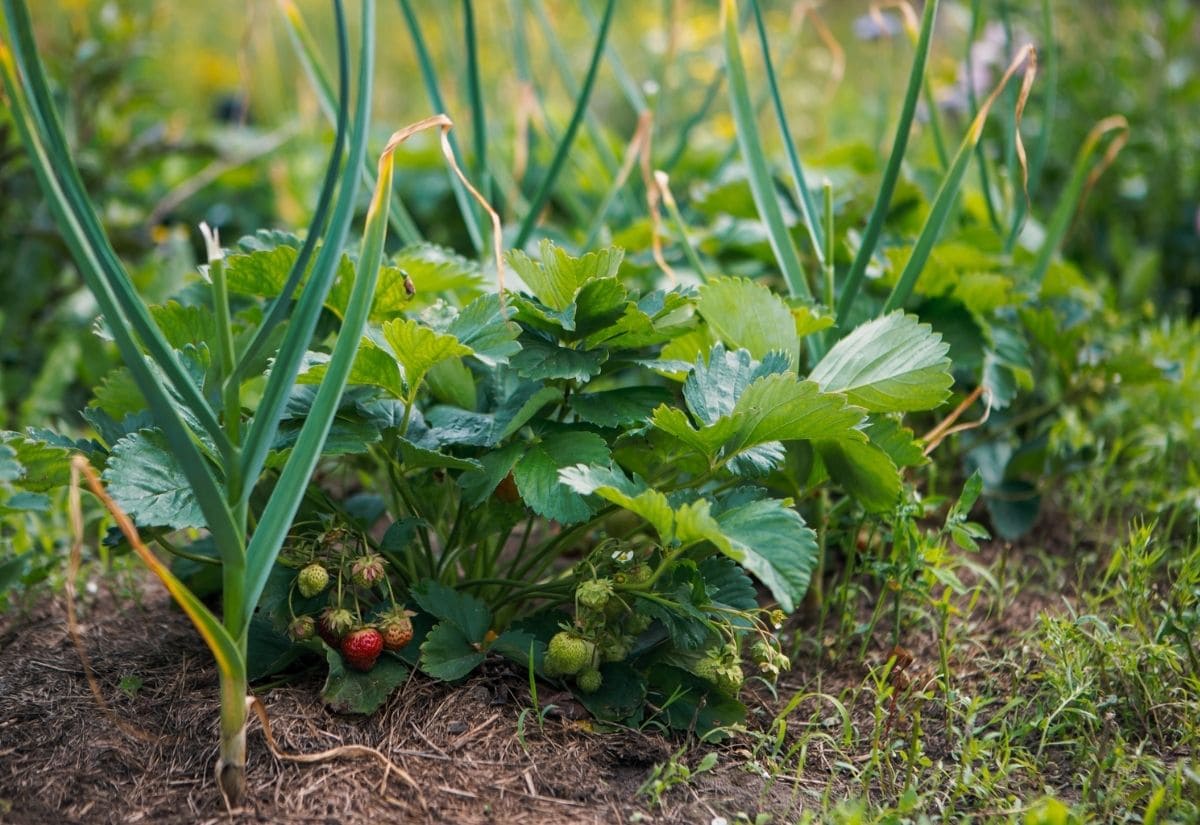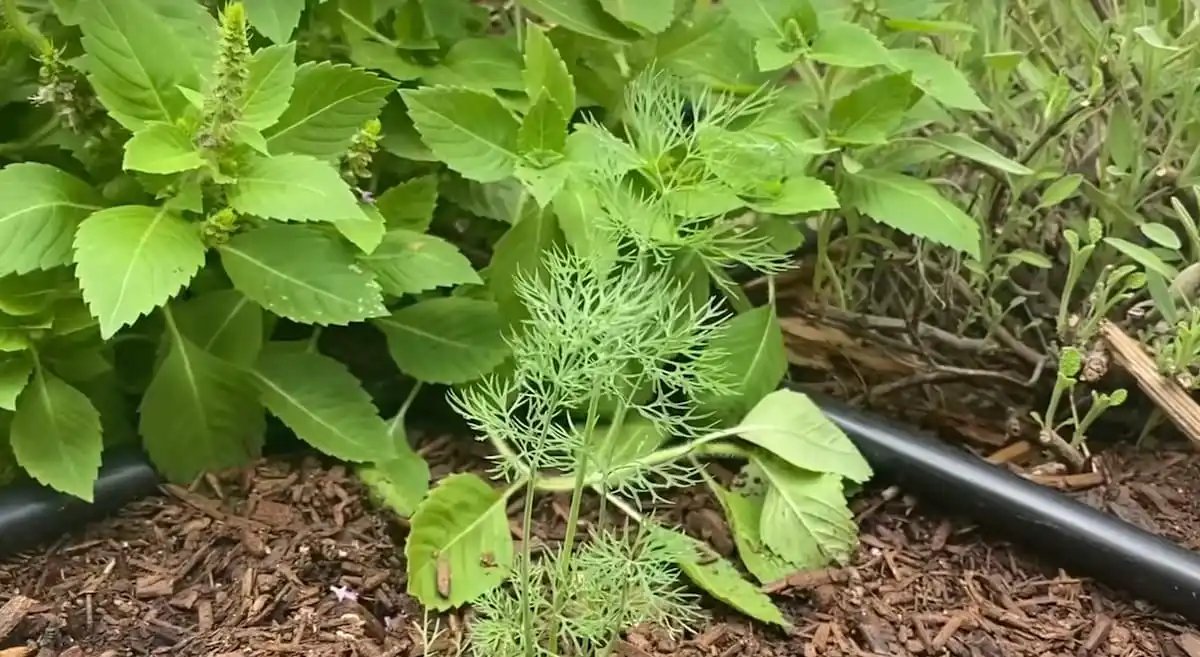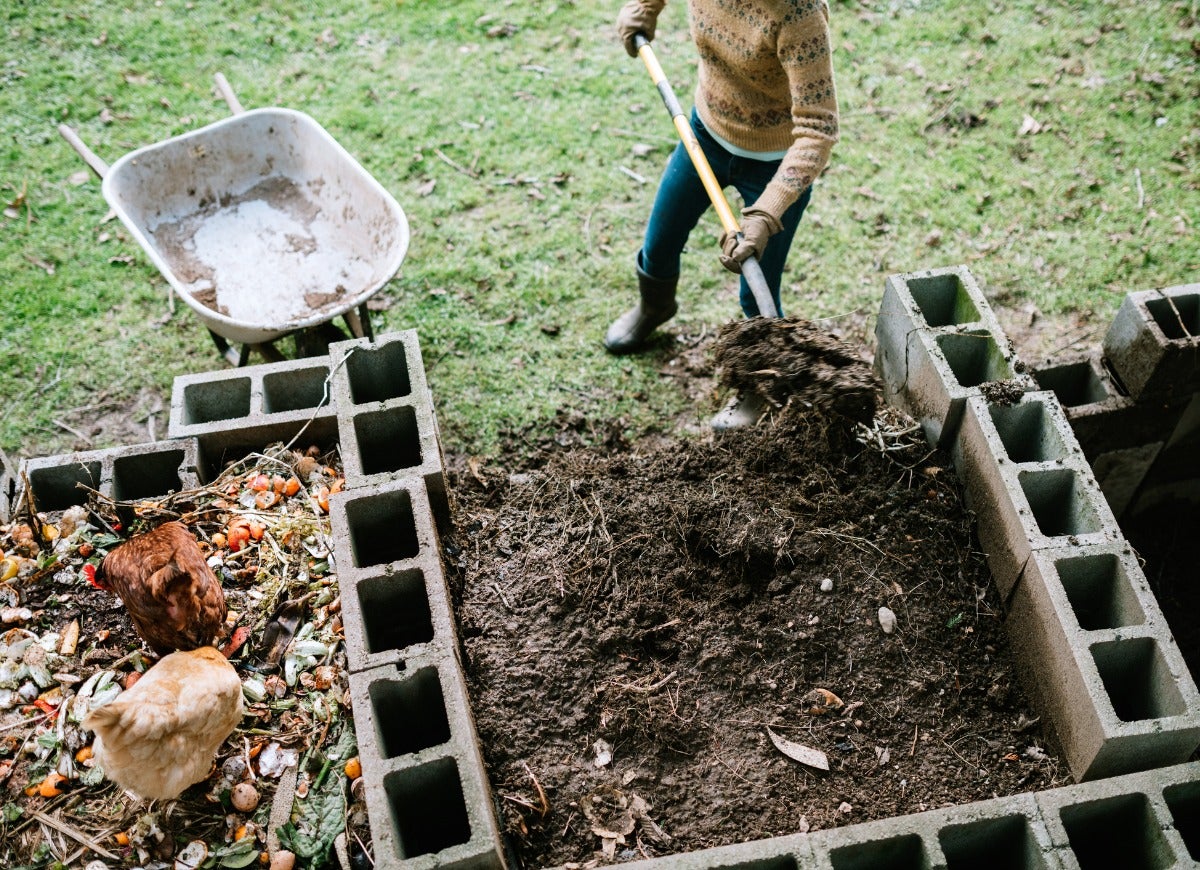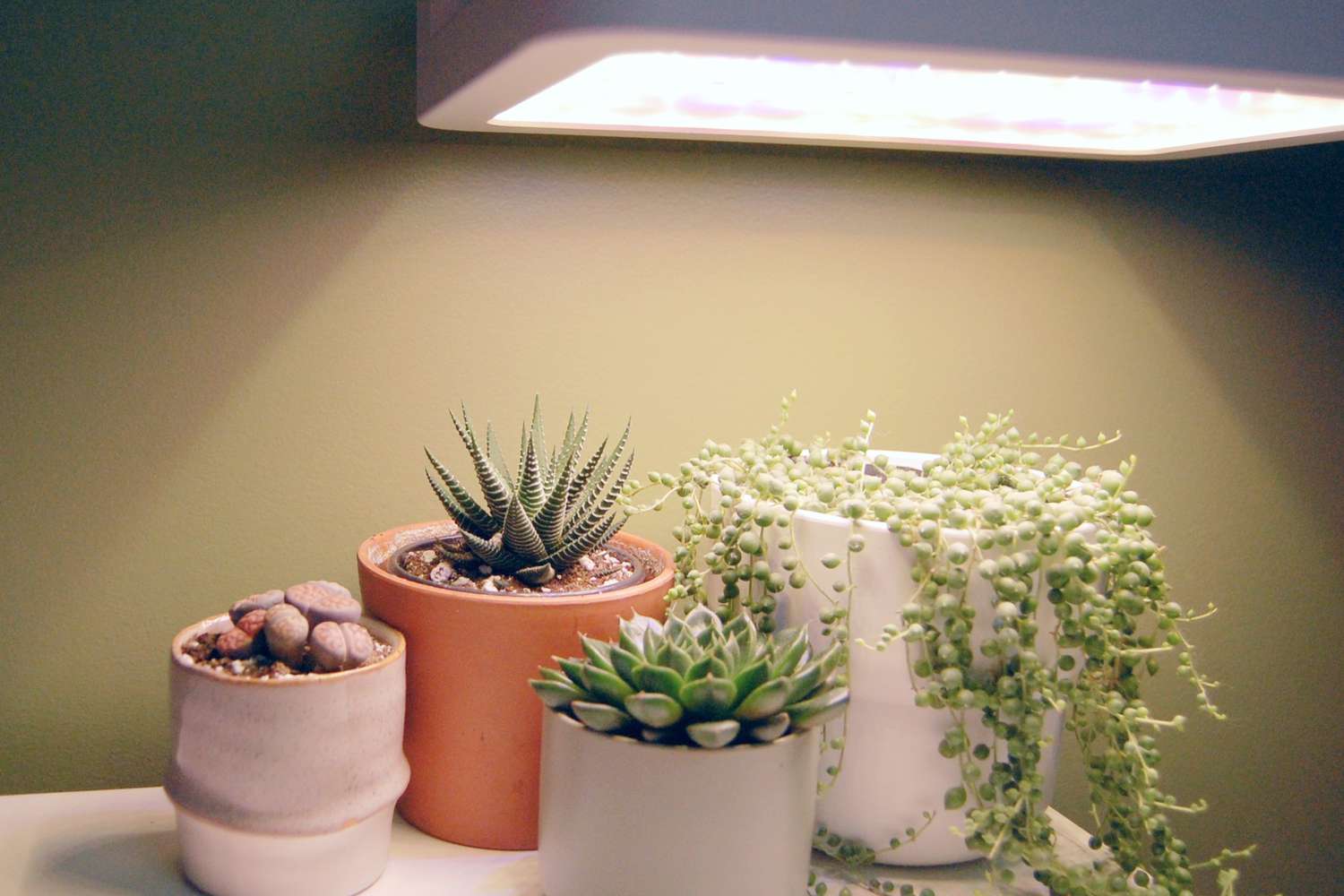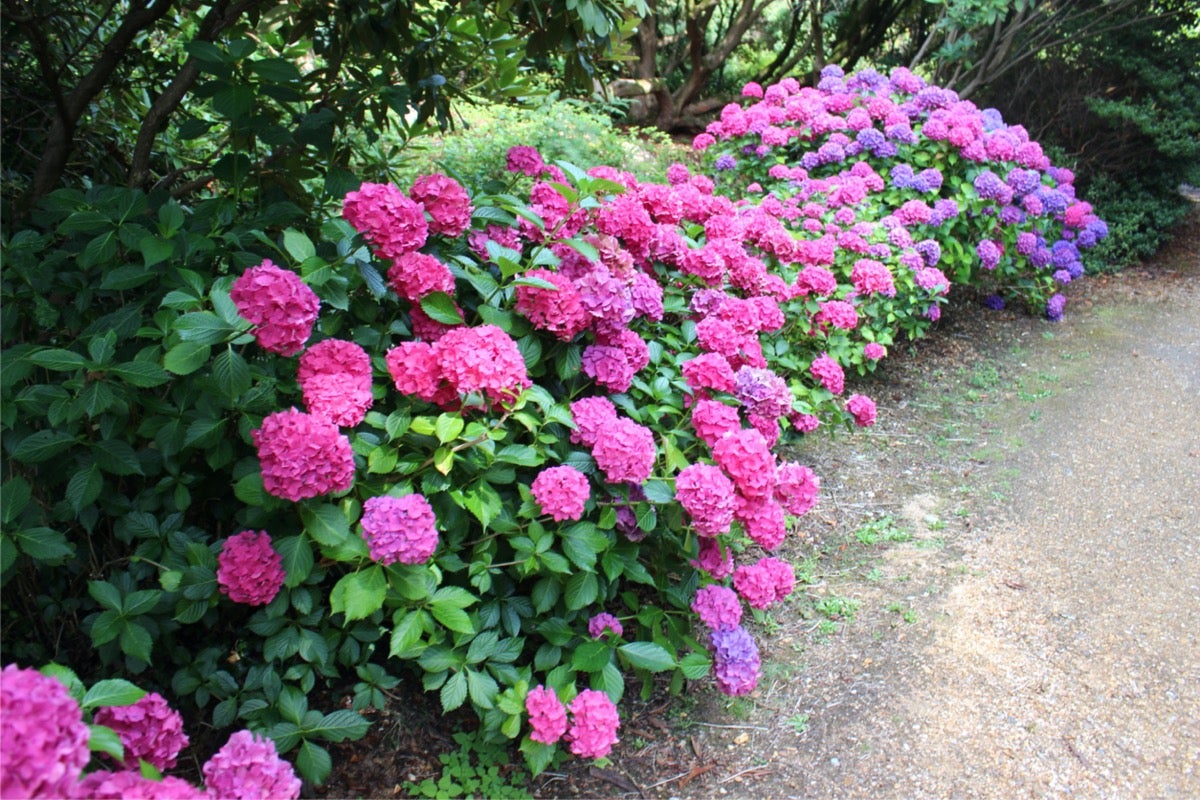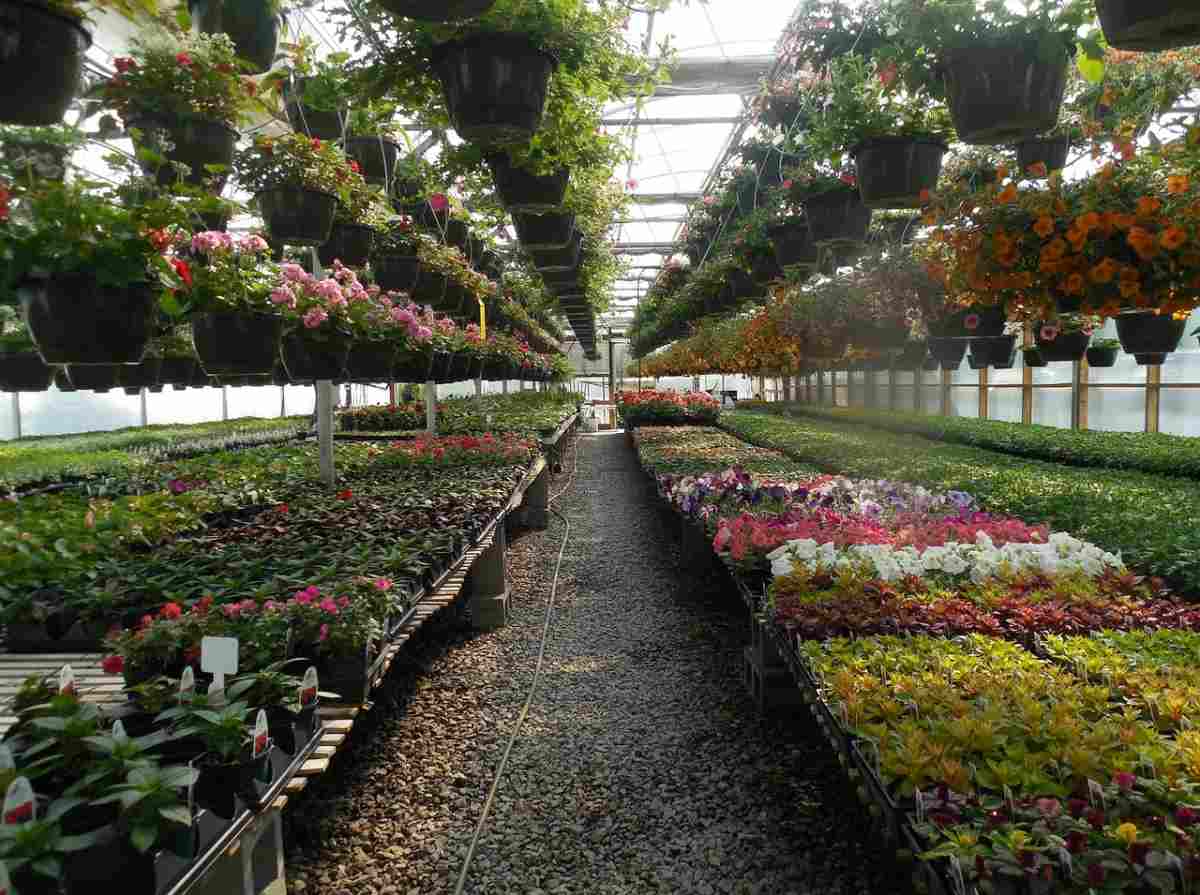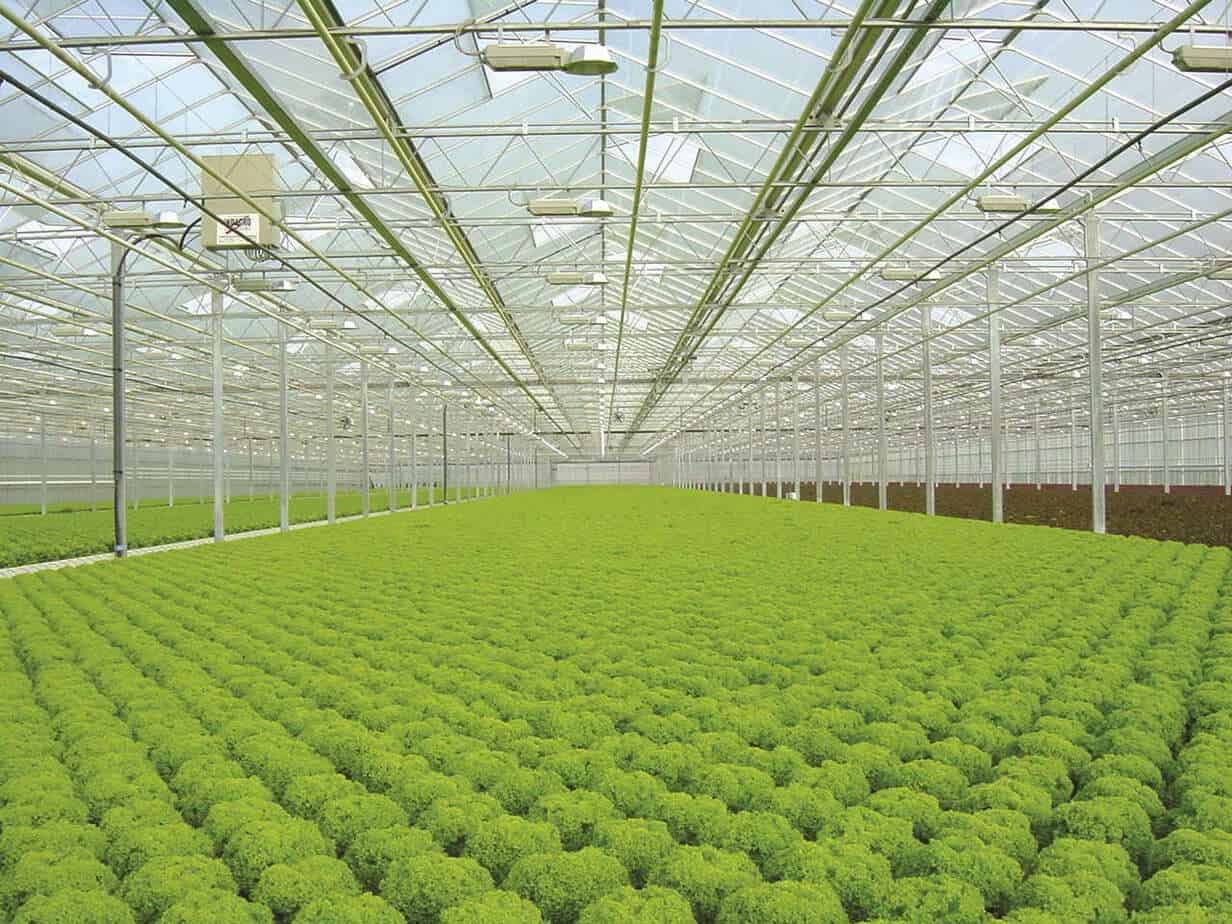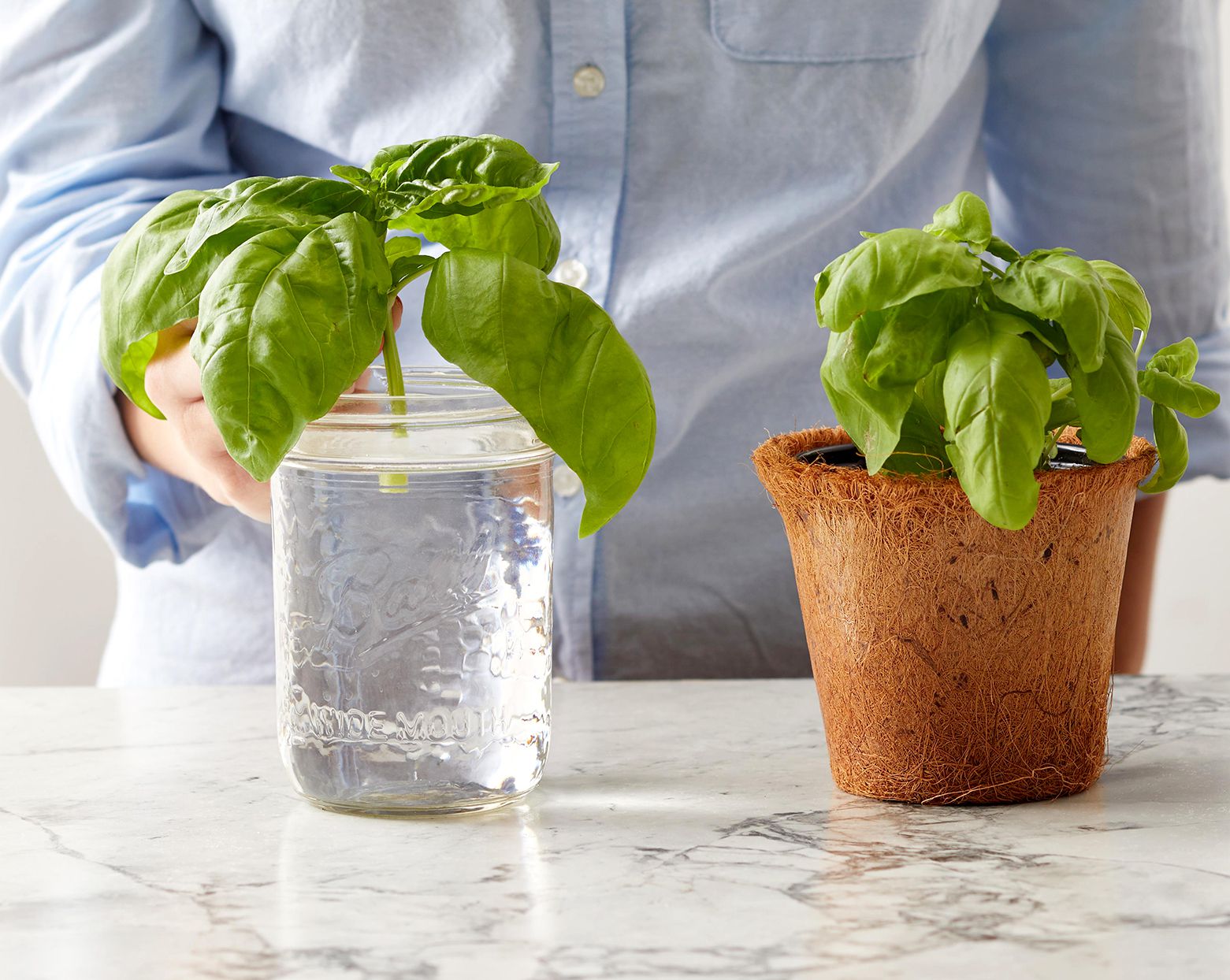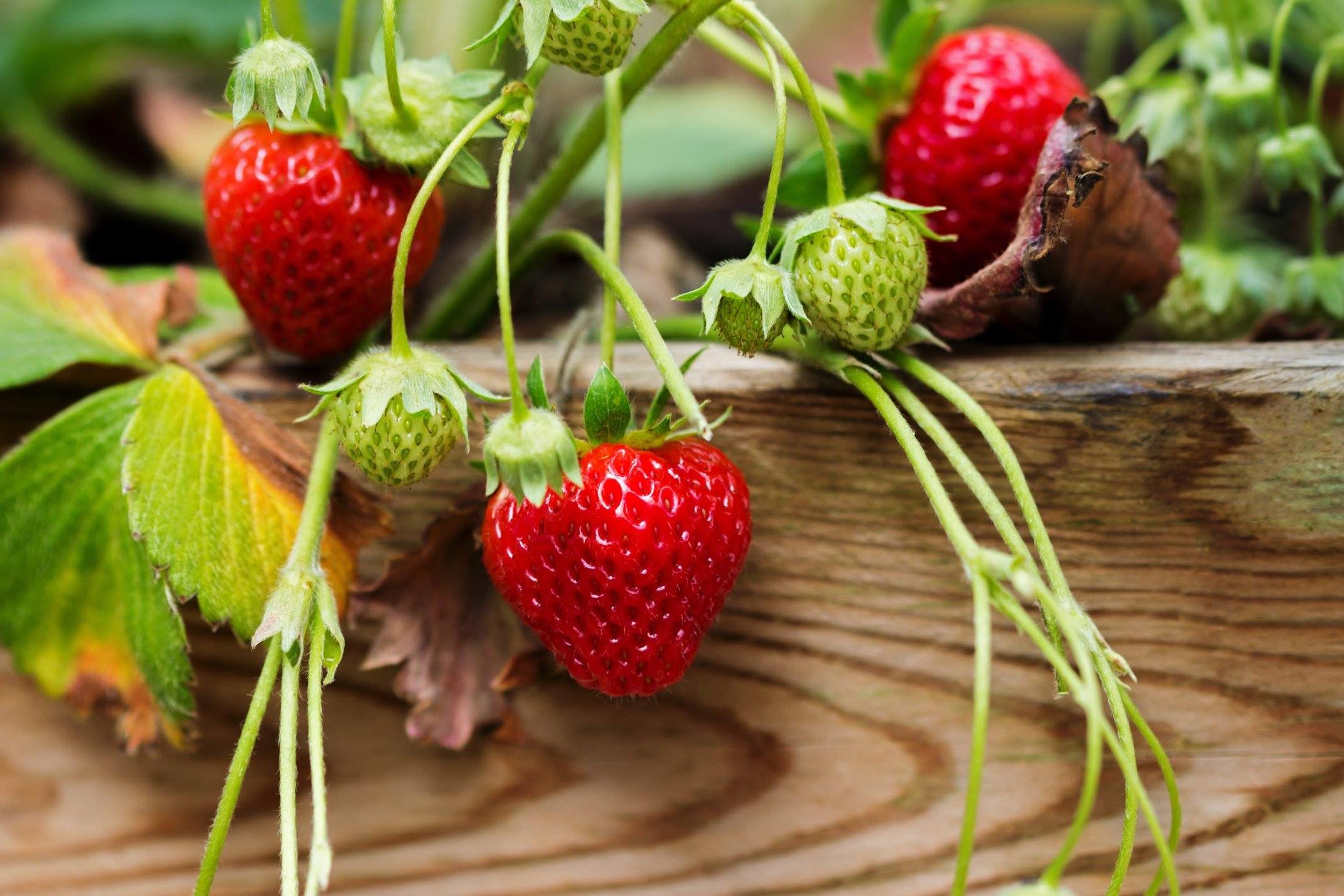Home>Types of Gardening>Edible Gardening>What Are The Best Herbs To Grow Indoors
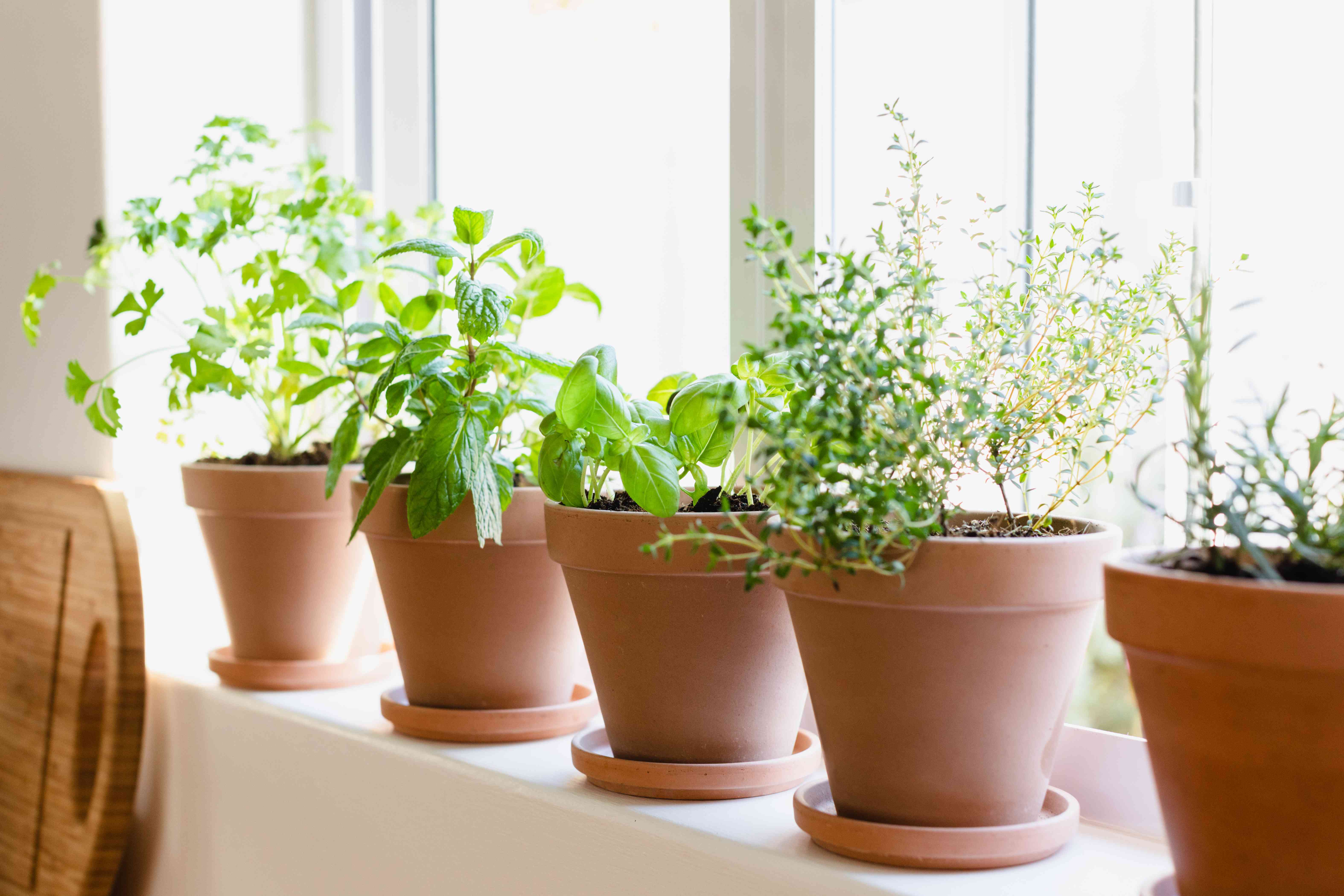

Edible Gardening
What Are The Best Herbs To Grow Indoors
Modified: January 22, 2024
Discover the top herbs for indoor gardening and learn how to grow them successfully. Enhance your edible gardening with these easy-to-care-for plants.
(Many of the links in this article redirect to a specific reviewed product. Your purchase of these products through affiliate links helps to generate commission for Chicagolandgardening.com, at no extra cost. Learn more)
Table of Contents
Introduction
Welcome to the world of indoor gardening, where you can bring the beauty and benefits of nature right into your home. Imagine stepping into your kitchen and plucking fresh herbs to add to your favorite dishes. With an indoor herb garden, you can do just that.
Growing herbs indoors has become increasingly popular, and for good reason. Not only does it offer the convenience of having fresh herbs at your fingertips year-round, but it also allows you to take full control of the growing conditions, ensuring that your herbs receive the optimal care they need to thrive.
Whether you have a small apartment or a spacious house, indoor herb gardening is a versatile and rewarding hobby that anyone can enjoy. You don’t need a green thumb or extensive gardening experience — just a few simple tools and a bit of love for plants.
In this article, we will explore the benefits of growing herbs indoors, discuss how to choose the right herbs for your indoor garden, guide you through setting up your own indoor herb garden, introduce you to some popular herbs for indoor gardening, provide tips for caring for your indoor herbs, and share how to harvest and use your fresh herbs. By the end, you’ll be well-equipped to embark on your own indoor gardening adventure.
So, whether you’re a seasoned gardener looking to expand your green space or a beginner seeking a fun and practical way to introduce more nature into your home, let’s dive in and discover the joys of growing herbs indoors!
Benefits of Growing Herbs Indoors
Growing herbs indoors offers a multitude of benefits that can enhance your culinary experience and overall well-being. Here are some of the key advantages:
1. Freshness and Flavor: When you grow herbs indoors, you have access to fresh, flavorful herbs all year round. Unlike store-bought herbs, which can sometimes be wilted or lack aroma, freshly harvested herbs from your indoor garden offer intense flavors that can elevate your dishes to new heights.
2. Convenience: Having an indoor herb garden means you no longer have to make last-minute trips to the grocery store when a recipe calls for herbs. Simply walk over to your herb garden and snip off the exact amount you need to enhance your culinary creations. It’s like having a mini herb aisle in your kitchen!
3. Health Benefits: Herbs are not only flavorful but also packed with beneficial nutrients. Incorporating fresh herbs into your diet can enhance the nutritional value of your meals. Additionally, some herbs have medicinal properties that can support various aspects of your health, such as digestion, immunity, and relaxation.
4. Aesthetics: Indoor herb gardens add a touch of natural beauty to your living space. With their vibrant colors and lush foliage, herbs can transform a dull corner into a vibrant focal point. Plus, tending to your herbs can be an enjoyable and therapeutic activity that promotes relaxation and mindfulness.
5. Cost Savings: Growing your own herbs indoors can save you money in the long run. Instead of buying expensive herb packets or bunches from the store, you can harvest what you need from your indoor garden without wasting any excess herbs.
6. Year-Round Gardening: Indoor herb gardening allows you to indulge in your love for gardening regardless of the weather outside. Even in colder climates or urban areas with limited outdoor space, you can still enjoy the satisfaction of nurturing and watching herbs grow.
These are just a few of the many benefits you can experience by growing herbs indoors. Whether you’re a cooking enthusiast, a health-conscious individual, or simply someone who appreciates the beauty of plants, an indoor herb garden is a wonderful addition to any home.
Choosing the Right Herbs for Your Indoor Garden
When it comes to choosing herbs for your indoor garden, there are a few important factors to consider. Here are some tips to help you select the right herbs:
1. Space and Lighting: Assess the available space in your home for your indoor garden. Take into account the amount of natural light that the area receives. Some herbs thrive in bright, direct sunlight, while others can tolerate lower light conditions. Choose herbs that are suitable for the lighting conditions in your home.
2. Culinary Preferences: Consider the herbs that you frequently use in your cooking. Choose herbs that align with your culinary preferences and the dishes you enjoy making. Common herbs such as basil, parsley, thyme, rosemary, and mint are versatile and work well in a variety of recipes.
3. Growth Habit: Different herbs have different growth habits. Some herbs, like basil and parsley, grow in leafy bunches, while others, like rosemary and thyme, have woody stems. Consider the size and shape of the mature plants and choose herbs that will fit well in your indoor garden.
4. Maintenance Requirements: Assess your gardening skills and the amount of time you can dedicate to caring for your herbs. Some herbs are low-maintenance and can withstand occasional neglect, while others require more attention. Choose herbs that align with your gardening experience and available time.
5. Companion Planting: Take advantage of companion planting to maximize the growth and health of your herbs. Some herbs have natural affinities for each other and can be planted together to create a harmonious environment. For example, basil and tomatoes complement each other and thrive when grown together.
6. Fragrance and Aesthetic Appeal: Consider the fragrance and aesthetic aspects of the herbs. Some herbs, like lavender and lemon balm, release a pleasant aroma that can freshen up your living space. Others, like chives and sage, have attractive flowers that add beauty to your indoor garden.
7. Accessibility and Availability: Lastly, consider the availability of herb seeds or starter plants in your area. Some herbs may be readily available, while others may require more effort to find. Choose herbs that are easily accessible to ensure a hassle-free start to your indoor herb garden.
By considering these factors, you can select a variety of herbs that are well-suited to your indoor gardening space and personal preferences. Remember, there are no hard and fast rules when it comes to choosing herbs – have fun experimenting and exploring new flavors and scents!
Setting Up an Indoor Herb Garden
Setting up an indoor herb garden is a straightforward and enjoyable process. Follow these steps to create your own thriving indoor garden:
1. Choose the Right Containers: Select appropriate containers for your herbs. Ensure they have drainage holes to prevent waterlogged soil. Opt for pots that are the right size for your herbs’ growth, allowing room for their roots to spread.
2. Select Quality Potting Soil: Use a high-quality potting mix that is well-draining and rich in organic matter. This will provide the necessary nutrients and promote healthy root development.
3. Find a Suitable Location: Identify a suitable spot in your home with adequate light and temperature conditions. Most herbs require at least 6 hours of direct sunlight or 12-16 hours of bright, indirect light per day.
4. Watering: Develop a watering routine and avoid overwatering or underwatering your herbs. Check the moisture level by sticking your finger into the soil. If it feels dry up to your first knuckle, it’s time to water. Ensure the excess water drains out of the pots.
5. Temperature and Humidity: Most herbs prefer temperatures between 60-75°F (15-24°C). Keep them away from cold drafts and maintain moderate humidity levels. Using a humidifier or placing a tray of water near your herbs can help increase humidity.
6. Light Source: If natural light is limited, use supplemental grow lights to provide sufficient light for your herbs. LED or fluorescent lights with a color spectrum similar to natural sunlight are ideal for indoor herb gardens.
7. Fertilizing: Feed your herbs with a balanced, water-soluble fertilizer once a month to replenish nutrients. Follow the instructions on the fertilizer packaging for proper application and dosage.
8. Pruning and Pinching: Regularly pinch or trim your herbs to promote bushier growth and prevent them from becoming leggy. This also encourages the production of fresh leaves.
9. Pest and Disease Control: Monitor your herbs for any signs of pests or diseases. If you notice any issues, promptly take action to prevent them from spreading. Organic pest control methods, such as neem oil or insecticidal soap, can be used if necessary.
10. Rotate Your Herbs: To ensure even growth, rotate your herbs every week or two. This allows all sides of the plants to receive sufficient light and prevents them from leaning towards the light source.
With these guidelines in mind, you are ready to set up your very own indoor herb garden. Enjoy the process of nurturing your herbs and watching them flourish in the comfort of your home.
Popular Herbs for Indoor Gardening
When it comes to growing herbs indoors, there are several popular options that thrive in indoor environments. Here are some of the most recommended herbs for your indoor garden:
1. Basil: Known for its vibrant green leaves and delightful aroma, basil is a versatile herb that adds a burst of flavor to many dishes. It thrives in warm temperatures and requires ample sunlight.
2. Parsley: With its curly or flat leaves, parsley is a staple herb in many kitchens. It is packed with essential vitamins and adds fresh, earthy notes to soups, salads, and sauces.
3. Thyme: Thyme is a hardy herb with small, aromatic leaves. It pairs well with a variety of dishes, including meats, roasted vegetables, and stews. Thyme prefers bright light and well-draining soil.
4. Rosemary: Known for its woody stems and pine-like fragrance, rosemary is a must-have herb for both cooking and ornamental purposes. It adds a robust flavor to roasted meats, potatoes, and bread.
5. Mint: Mint is a refreshing herb that comes in various varieties like spearmint and peppermint. It grows quickly and is perfect for adding to beverages, salads, or desserts. Mint prefers moist soil and moderate light.
6. Chives: Chives are a versatile herb that adds a mild onion flavor to dishes. They have slender, hollow stems and can be used as a garnish or an ingredient in salads, soups, and dips.
7. Oregano: Oregano is a popular herb in Mediterranean cuisine. It has a robust flavor and pairs well with tomato-based dishes, pizzas, and grilled vegetables. Oregano prefers well-draining soil and moderate light.
8. Sage: Sage is an aromatic herb with velvety leaves and a peppery flavor. It is often used in stuffing, pasta dishes, and roasted meats. Sage requires bright light and well-draining soil.
9. Cilantro (Coriander): Cilantro is a herb with fresh, citrusy leaves that add a distinctive flavor to Mexican, Indian, and Asian cuisines. Its seeds, known as coriander, are used as a spice. Cilantro thrives in cool temperatures and moderate light.
10. Dill: Dill features delicate, feathery leaves and a mild, slightly tangy taste. It is commonly used in pickling, seafood dishes, and sauces. Dill prefers moderate light and well-draining soil.
These are just a few examples of popular herbs that can be successfully grown indoors. Experiment with different herbs to discover your own favorites based on your taste preferences and culinary needs.
Caring for Indoor Herbs
Caring for indoor herbs is relatively easy and requires attention to a few key aspects to ensure their health and vitality. Here are some essential care tips for your indoor herbs:
1. Watering: Proper watering is crucial for the well-being of your herbs. Water your herbs when the top inch of soil feels dry to the touch, but avoid overwatering, as it can lead to root rot. Ensure that excess water drains out of the pots to prevent waterlogged soil.
2. Light: Most herbs thrive in direct sunlight or bright, indirect light. Place them near a south-facing window or provide them with artificial grow lights if natural light is limited. Rotate the pots regularly to ensure even exposure to light and encourage upright growth.
3. Temperature and Humidity: Maintain a temperature range of 60-75°F (15-24°C) for your herbs. Some herbs, like basil and mint, appreciate higher humidity levels. You can increase humidity by placing a tray of water near your herbs or using a room humidifier.
4. Fertilizing: Feed your indoor herbs with a balanced, water-soluble fertilizer every 4-6 weeks during the growing season. Follow the instructions on the fertilizer packaging for proper application and dosage. Avoid over-fertilization, as it can lead to excessive foliage growth with a reduced flavor.
5. Pruning and Pinching: Regularly prune or pinch back your herbs to promote bushier growth and prevent them from becoming leggy. Pinching off the tips of the stems encourages branching and stimulates fresh leaf production. Use sharp, clean scissors for pruning.
6. Pest Control: Monitor your herbs for signs of pests such as aphids, spider mites, or whiteflies. If you notice any infestation, isolate affected plants and treat them with organic pest control methods, such as neem oil or insecticidal soap. Regularly inspect the undersides of leaves where pests often hide.
7. Soil Maintenance: Check the soil periodically to ensure that it remains well-draining. If the soil becomes compacted or waterlogged over time, gently aerate it with a fork or small gardening tool. Additionally, refresh the potting mix every 1-2 years to replenish nutrients and improve drainage.
8. Harvesting: Regularly harvest your herbs to encourage new growth. When the plants reach a size that allows for selective harvesting, snip off leaves or stems as needed. Harvest in the morning when the essential oils in the herbs are most concentrated.
By following these care guidelines, you can ensure that your indoor herbs stay healthy, productive, and full of flavor. Remember to enjoy the process of tending to your herbs and watch them thrive in your home.
Harvesting and Using Fresh Herbs
One of the joys of having an indoor herb garden is the ability to harvest fresh herbs whenever you need them. Here are some tips on how to properly harvest and utilize your homegrown herbs:
1. Timing: Harvest herbs when they are at their peak flavor and vitality. Choose a time in the morning when the essential oils in the herbs are most concentrated.
2. Selective Harvesting: Rather than cutting the entire plant at once, selectively harvest leaves or stems as needed. This allows the plant to continue growing and provides a steady supply of fresh herbs.
3. Pruning Techniques: Use clean, sharp scissors or pruning shears to make clean cuts when harvesting. Snip just above a leaf node or where new growth is emerging to encourage bushier, healthier plants.
4. Leafy Herbs: For leafy herbs like basil and parsley, remove individual leaves from the outer parts of the plant. This encourages compact growth and allows the inner leaves to continue expanding.
5. Woody Herbs: Woody herbs like rosemary and thyme can be harvested by cutting the stems close to the base of the plant. Avoid excessive pruning to maintain the overall shape and structure of the herb.
6. Storage: To keep your harvested herbs fresh, gently wash them in cool water and pat them dry with a clean towel. Store them in airtight containers or wrap them in damp paper towels and place them in the refrigerator to extend their shelf life.
7. Culinary Uses: Fresh herbs can enhance the flavors of your dishes in numerous ways. Add them to sauces, marinades, soups, salads, and stir-fries. Experiment with different combinations of herbs to create your own signature flavors.
8. Drying and Freezing: If you have an abundance of herbs, consider drying or freezing them for future use. Hang small bunches upside down in a warm, well-ventilated area to air dry, or freeze chopped herbs in ice cube trays with a bit of water or olive oil.
9. Herbal Infusions: Use fresh herbs to infuse oils, vinegars, or syrups, which can be used to add flavor to various dishes. Simply place herbs in a clean jar, cover with the desired base (oil, vinegar, or syrup), and let it infuse for a few weeks.
10. Herbal Teas: Many herbs, such as mint, chamomile, and lavender, make delightful herbal teas. Harvest a few sprigs of the herb, steep them in hot water for a few minutes, and enjoy a soothing and aromatic cup of herbal tea.
With proper harvesting techniques and creative culinary uses, your indoor herb garden can provide you with a constant supply of fresh, aromatic herbs to elevate your cooking and delight your senses.
Common Indoor Herb Garden Mistakes to Avoid
While indoor herb gardening can be a rewarding and enjoyable experience, it’s important to be aware of common mistakes that can hinder the growth and health of your herbs. Here are some common indoor herb garden mistakes to avoid:
1. Overwatering: One of the most common mistakes is overwatering your herbs. Remember that indoor plants generally require less water compared to outdoor plants. Ensure proper drainage and only water when the top inch of the soil feels dry.
2. Insufficient Light: Providing adequate light is crucial for the growth and productivity of your herbs. Lack of light can result in leggy, weak plants. Make sure your herbs receive at least 6 hours of direct sunlight or use supplemental grow lights if needed.
3. Improper Container Size: Using containers that are too small can restrict root growth and lead to stunted plants. Choose containers that provide ample space for your herbs to thrive and allow for proper root development.
4. Poor Soil Quality: Using low-quality or inappropriate soil can negatively impact your herbs’ growth. Invest in a high-quality potting mix that is well-draining and provides adequate nutrients for your herbs.
5. Neglecting Pruning and Pinching: Failure to prune or pinch back your herbs can result in leggy, unruly plants. Regularly trim your herbs to promote bushier growth and prevent them from becoming straggly or top-heavy.
6. Overcrowding: Planting too many herbs in a small space can lead to competition for nutrients, light, and space. Give your herbs room to grow by spacing them adequately and avoiding overcrowding.
7. Ignoring Pest and Disease Prevention: Indoor herbs are not immune to pests and diseases. Inspect your plants regularly for signs of infestation or disease, and take immediate action to prevent them from spreading. Use organic pest control methods and provide proper ventilation to reduce the risk of fungal issues.
8. Neglecting Temperature and Humidity: Herbs have specific temperature and humidity requirements. Avoid exposing them to extreme temperature fluctuations or dry environments. Maintain a suitable temperature range and consider using methods to increase humidity, such as placing a tray of water near your herbs or using a room humidifier.
9. Over-Fertilization: Excessive fertilizer can lead to nutrient burn and interfere with the natural flavor and fragrance of your herbs. Follow the recommended dosage and frequency of fertilization, and use a balanced, water-soluble fertilizer suitable for herbs.
10. Lack of Patience: Remember that gardening takes time and patience. Avoid being too hasty or expecting instant results. Allow your herbs to grow and develop at their own pace, and enjoy the process of nurturing them.
By avoiding these common mistakes, you can create a thriving indoor herb garden that not only beautifies your living space but also provides you with a bountiful harvest of fresh, flavorful herbs to enjoy in your culinary endeavors.
Conclusion
Congratulations! You have now gained a wealth of knowledge on the joys and intricacies of indoor herb gardening. By following the tips and guidelines provided in this article, you can create a thriving indoor herb garden that adds beauty, fragrance, and flavor to your home.
Remember to choose the right herbs that align with your space, lighting, and culinary preferences. Set up your indoor herb garden with suitable containers, quality soil, and proper care routines. Avoid common mistakes such as overwatering, insufficient light, and neglecting pruning and pest prevention. Harvest your herbs at the right time and explore the endless culinary possibilities they offer.
Indoor herb gardening not only provides you with a convenient source of fresh herbs all year round but also offers numerous benefits for your well-being. Enjoy the freshness and flavor of herbs in your dishes, delight in the beauty and aroma they bring to your home, and bask in the fulfillment of nurturing and watching your herbs grow.
So, unleash your creativity, experiment with different herbs and flavors, and let your indoor herb garden become a source of inspiration and satisfaction. Whether you’re a seasoned gardener or a beginner, the world of indoor herb gardening is waiting for you to explore its wonders. Start your journey today and reap the many rewards that come with cultivating and using your own fresh herbs.
